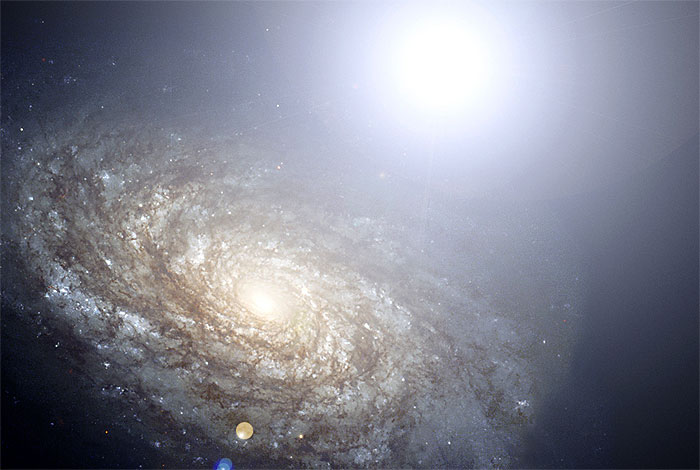.

Astronomers searching for clues about dark energy, the mysterious force that is speeding up the expansion of the Universe, have uncovered new evidence about the nature of supernovae, finding many are lighter than scientists had expected.
The findings, from an international team from the Nearby Supernova Factory project, overturn previous understanding of white dwarf stars and raise new questions about how these stars explode.
“White dwarfs are dead stars, the corpses of stars that were once like our Sun. They won’t explode on their own – they need another star to help blow them up,” said ANU astronomer Dr Richard Scalzo, who led the latest research.
“We now know it’s much easier to blow them up than we used to think.”
A supernova is a star that explodes and shines much more brilliantly as it reaches the end of its life.
By studying “nearby” Type Ia (1a) supernovae – within a billion light years from earth – astronomers can then compare them with older and fainter supernovae even further out in space, allowing them to measure distances in the Universe. Dr Scalzo said most of the supernovae his team studied had blown up well before dinosaurs walked on Earth.
He said astronomers had previously believed white dwarfs needed to be around 1.4 times the mass of the Sun before they could explode.
Using the University of Hawaii’s 2.2-metre telescope, his team studied 19 Type Ia supernovae. By carefully watching how quickly the supernovae faded away after their brightest point, and comparing to calculations made by computer, the team could then “weigh” each explosion to figure out the white dwarf’s mass.
They were surprised to find that as many as half were well below the previously-assumed tipping point for an explosion. That meant the life the dying stars led, and the cause of their violent deaths, also had to be totally different from what scientists once thought.
Dr. Scalzo said the ultimate aim of the research was to better understand dark energy, for which the 2011 Nobel Prize in Physics was awarded to ANU professor Brian Schmidt, Adam Riess from Johns Hopkins University, and Saul Perlmutter from Lawrence Berkeley National Laboratory.
“Brian Schmidt used type Ia supernovae to discover that dark energy exists,” he said. “We’re now trying to understand what it is. This new information about how white dwarfs explode is a huge step forward towards that goal.”
Cosmologist Greg Aldering, who leads the international Nearby Supernova Factory in Berkeley, said: “This is a significant advance in furthering Type Ia supernovae as cosmological probes for the study of dark energy.”
Dr Scalzo was previously based in the Nearby Supernova Factory headquarters at Lawrence Berkeley National Laboratory in California, and is a member of the Centre of Excellence for All-sky Astrophysics.
The ARC Centre of Excellence for All-sky Astrophysics (CAASTRO) is a collaboration between The Australian National University, The University of Sydney, The University of Melbourne, Swinburne University of Technology, the University of Queensland, The University of Western Australia and Curtin University, the latter two participating together as the International Centre for Radio Astronomy Research.
CAASTRO is funded under the Australian Research Council Centre of Excellence program, with additional funding from the seven participating universities and from the NSW State Government’s Science Leveraging Fund.
Quelle: The Australian National University, Canberra
7970 Views
